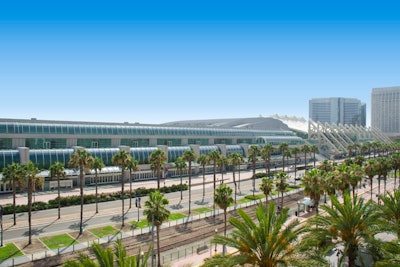
Meeting and convention planners should be looking outside the walls of their venues for expertise and experiences that can be provided by public and private innovators in their host cities. And convention bureaus should champion this sort of collaboration to highlight the role of meetings and conventions as drivers of economic growth. Those are some of the key messages from a new report, Defining Conventions as Urban Innovation and Economic Accelerators, produced by Skift in partnership with Meetings Mean Business.
“This is about the changing role of destination marketing organizations, how they should better integrate … to really align with being true economic drivers versus just a marketing entity for a city,” says Nan Marchand Beauvois, vice president of the U.S. Travel Association, the founder of the Meetings Mean Business coalition. “And there’s no report like this in the United States. You have documented examples in Australia, in Dubai, in Germany, but nothing holistically in the U.S.”
Rather than just focusing on the short-term economic boost conventions create, the report outlines “legacy impacts” that should be researched and measured. Examples include the ability of conventions to “position a city as a hub of innovation,” providing a “marketing showcase to promote the region’s advanced industry, creative, and academic expertise to companies worldwide,” and to “encourage corporate expansion, relocation, and/or investment into a region.”
As examples, the report includes case studies from seven cities in the United States that are connecting planners with local entrepreneurs, universities, research facilities, and businesses, to both drive the city’s economic growth and to create more meaningful experiences for attendees. Marchand Beauvois says she hopes planners will read these case studies and be inspired to consider new options for their events. “For example when you talk technology, it’s always Northern California, San Francisco, and San Jose, but there are a lot of cities that are technological hubs,” she says. “I think planners do need to ask more questions and to take a risk and go out of their safety zone as to where they go for their events.”
Planners should also tap into the expertise of the convention bureaus to connect them with local people and resources who can be integrated into their events. “I know from my own personal experience … whenever I’m in a city I look at what are the top brands in that city … and I go to the D.M.O. and I say can you get me a contact,” she says. “Most D.M.O.s have excellent work relationships within their communities. It’s just connecting the dots and looking it as a much larger picture instead of just a one-off. “



















